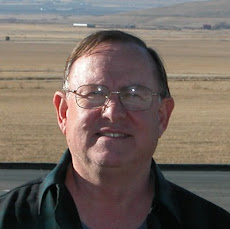Well, that was a long time ago. I just finished taking the test again on line, and found, to no surprise, that I am still in the same class – heavily introverted, heavily intuitive, slightly thinking (versus feeling), and moderately judging. (My family, I know, thinks I am heavily judging, but they are wrong.) A phrase in the current description of this personality class contains the following eerily correct statement:
“Personal relationships, particularly romantic ones, can be the INTJ's Achilles heel. While they are capable of caring deeply for others (usually a select few), and are willing to spend a great deal of time and effort on a relationship, the knowledge and self-confidence that make them so successful in other areas can suddenly abandon or mislead them in interpersonal situations.” From: http://typelogic.com/intj.html
When I was in college, I thought everyone thought the way I did. For years this was a good working assumption because I was in a school full of engineers and scientists, and their thought processes were close enough to mine that communication was never an issue.
Then I met my wife.
Needless to say, her M-B personality type is different from my own. Another phrase from my personality description fits this situation:
“This sometimes results in a peculiar naiveté, paralleling that of many Fs -- only instead of expecting inexhaustible affection and empathy from a romantic relationship, the INTJ will expect inexhaustible reasonability and directness.” From: http://typelogic.com/intj.html
Reasonability and directness – is that too much to ask for?
“… willing to spend a great deal of time and effort on a relationship …” That was certainly true in my case. When I saw my wife for the first time, she was 17, and I thought she was the most beautiful creature I had ever seen. It wasn’t five minutes before I was thinking of marriage, and I hadn’t even met her yet. I was told she was going with someone, and I thought to myself, “There is a boy who is going to be terribly disappointed.” She is still beautiful – she is beautiful in all the ways it is possible to be beautiful – of face and form, of personality and disposition, of spirit and adventure, in intelligence, and, especially, in her innate desire to help others.
It first began to dawn on me that our thought processes were not the same shortly thereafter. This was a brand-new idea – one I had never had before. The earlier description of my personality type included the phrase, “… feels no need to state the obvious.” I knew this about myself already, having spent untold hours at work sitting in silent deathly boredom through meetings where people debated at great length and in excruciating detail some subject, only to eventually come to what to me was already an obvious conclusion. Unfortunately, what is “obvious” to me is not always “obvious” to my wife. This difference led to several instances of me going one way and her another, which got me to thinking, “What is going on here?” I tended to feel that she was being deliberately obtuse, and she tended to feel that not only was I being perversely unfeeling and non-communicative, but also that her views were being deliberately undervalued.
Eventually I began to understand that our thinking processes were just different. Mine were not necessarily better (or worse), but were just different. Sometimes her conclusions were better than mine, which I found a bit confusing, because she had reached them by a path that I could not follow. But at other times, and in areas where I had done what I considered a lot of homework, I knew what I knew, and thought my conclusions were better.
“To outsiders, INTJs may appear to project an aura of "definiteness", of self-confidence. This self-confidence, sometimes mistaken for simple arrogance by the less decisive, is actually of a very specific rather than a general nature; its source lies in the specialized knowledge systems that most INTJs start building at an early age. When it comes to their own areas of expertise -- and INTJs can have several -- they will be able to tell you almost immediately whether or not they can help you, and if so, how. INTJs know what they know, and perhaps still more importantly, they know what they don't know.” From: http://typelogic.com/intj.html
Well, now I know more about what I don’t know than I did before I met my wife, but one thing I still don’t know is how my wife’s mental processes operate. Although she is a compelling attraction that I cannot ignore, she is still a great mystery to me. We share a great deal in common, but in the matter of how our brains work, we are different. Dealing with that difference, and trying to understand it, is, and has been, the work of almost my entire lifetime.

















